Grooming your dog at home is essential not just so they smell and look good but also to maintain proper hygiene and health of your furry friend. Regular grooming sessions can help remove dirt, dead hair, and dandruff, and also prevent matting of the coat.
With the right tools and techniques, you can keep your dog looking and feeling their best without the need for professional groomers. In this article, we will provide expert tips on how to groom a dog at home.
- Regular grooming promotes dog hygiene and prevents matting.
- Use vet-approved ear cleansers and dog-specific shampoos.
- Trim dog nails with caution to avoid cutting too much.
- Clean dog's eyes and paws to avoid infection and discomfort.
The information provided herein is for informational purposes only. Please refer to our disclaimer for more details..
Benefits of Regular Dog Grooming
Regular grooming has several benefits for your dog. It helps maintain healthy paws by keeping the nails trimmed and preventing them from becoming too long that can lead to injuries and infection.
It helps to clean the ears from wax buildup, and owners can detect any allergies or parasites like ticks and fleas by close inspection of the ears, and overall body coat.
Grooming also allows you to check for mats or tangles in your dog’s coat, which can be uncomfortable for them. Matts need to be removed before bathing your dog, otherwise it can cause skin irritation and damage due to friction and dampness leading to infection like pyoderma. Early detection and removal of matts can help save a trip to the vet.
Grooming a pup on a regular basis helps familiarize the puppy with the process and aids in training the dog to stay calm enjoy the grooming process during professional grooming.
Additionally, bathing your dog helps keep their skin clean and free from irritants. Overall, regular grooming sessions keep your dog clean, comfortable, and happy.
Essential Dog Grooming Tools
To groom your dog at home effectively, you will need a selection of essential grooming tools. These tools are specifically designed to ensure the safety and comfort of your furry companion during the grooming process.
Clippers and Scissor:
Clippers are essential for trimming your dog’s coat or nails. Choose clippers that are suitable for your dog’s size and coat type. If you are looking to shave your dog, It’s important to use clipper blades designed for dogs so you are less likely to accidentally cut the skin during grooming sessions. Nail trimmers are used for clipping the nails, they come in all sizes depending on the breed type.
Specially designed scissors are available in the professional grooming kit, for trimming hairs and curved scissors for styling.
Brushes and Combs:
Brushes and combs are indispensable for removing tangles, mats, and loose hair from your dog’s coat. Many types of brushes are available like pin brush, slicker brush, dematting comb and rakes.
Different coat types may require specific brushes or combs, so ensure you choose the right tools for your dog’s unique needs. Slicker brush has a set of fine short wires arranged on a flat surface with handle, used in medium to large coat dogs with long and curly hair like Huskies and Saint Bernard to remove matts. Rakes are also used for removing tangles but with deeper penetration.
Ear Cleansing solutions:
Always use a vet approved ear cleanser for your dogs, it is recommended to avoid any product that is acidic or has alcohol in it, because it can seriously damage the ear canal. Always use a water based solution preferably with monosaccharides or aloe vera to soothe the ear surface.
Shampoos and Conditioners:
There are a variety of dog conditioners available in the market, however, it is recommended to use a shampoo that has oatmeal or aloe vera as active ingredients.
These natural constituents not only cleans the coat but also conditions the hairs, moisturizes the skin and improves the overall coat health by warding off some infectious agents. Chemical based shampoos pose a risk of allergies and hair breakage, therefore always check your dog shampoo label.
By having these essential grooming tools on hand, you’ll be well-prepared to groom your dog at home and provide them with a comfortable and enjoyable grooming experience.
Bathing Your Dog at Home
Bathing your dog is a crucial step in their grooming routine. It helps to keep their coat clean and free from dirt and odors. Give your dog a regular bath whenever you feel they are dirty or have an odor. Follow these expert tips to ensure a successful and stress-free bathing experience for both you and your furry friend.
Start with brushing the coat: Remember to always brush the coat of your dog before bathing in order to remove dead hair, dirt or tangles. It is the most crucial step to remove matted hair before bathing, because if matts are left intact, after bathing the coat will not dry properly and the matt problem will get even worse.
Clean the ears: Before starting the bath, it’s important to clean your dog’s ears. Use a cotton ball and gently wipe the outer part of their ears. You should put the cotton ball in the ears, this will prevent water from entering the ear canal and causing discomfort or infections.
Use warm water: When bathing your dog, make sure to use warm water. Cold water can be uncomfortable for them, while hot water can irritate their skin. Find the right temperature that your dog finds comfortable, and adjust accordingly.
Select a dog-specific shampoo: Choose a shampoo that is specially formulated for dogs. Human shampoos can be too harsh for their sensitive skin and may cause irritation because of the fact that human skin is more acidic and human shampoos are made using chemicals to support that acidity which is not suitable for dogs.
A dog-specific shampoo will help maintain the pH balance of their skin and keep their coat healthy. Avoid putting the shampoo in the dog’s eyes as it can cause irritation and conjunctivitis.
Thoroughly rinse your dog: After applying shampoo to the whole coat, scrub gently for 5 to 8 minutes, make sure to rinse your dog thoroughly. Leftover shampoo can cause skin irritation and dryness. Use your hands or a handheld showerhead to ensure that all shampoo is completely rinsed from their coat.
Dry your dog properly: Once the bath is complete, use a towel or a pet dryer to dry the dog. Rub the towel gently over their body to remove excess water and then use the pet dryer on a low heat setting. Avoid using high heat as it can damage their skin. Avoid directing the dryer towards the dog’s eyes when drying the head as the air pressure can damage the eyes.
By following these bathing tips, you can help keep your dog’s coat clean and their skin healthy. Remember, a happy and clean dog is a healthy dog!
Trimming Nails and Cleaning Ears
Regular nail trims are essential for maintaining your dog’s paw health. To groom your dog at home, use dog nail clippers to clip the long nails and be cautious not to cut too close to the quick, as it can cause bleeding. Always look closely at the nails, identify the margin where you see pinkish tinge, remove nails above this spot. However, dark nails in some of the breeds like Shih Tzu and Poodles are difficult to identify.
If you’re unsure about how to trim your dog’s nails properly, it’s always a good idea to consult a veterinarian or a professional groomer for guidance.
Cleaning your dog’s ears is another important aspect of grooming. Regular ear cleaning helps prevent infections and keeps your dog comfortable. Use a dog-specific ear cleaner and follow the instructions carefully to avoid any discomfort or damage to your dog’s ears. Remember to clean only the outer part of the ear and avoid inserting anything deep into the ear canal.
- Trim your dog’s nails regularly to maintain paw health.
- Use dog nail clippers and be cautious not to cut too close to the quick.
- If unsure, consult a veterinarian or professional groomer for guidance.
- Clean your dog’s ears regularly using a dog-specific ear cleaner.
- Follow the instructions carefully to avoid discomfort or damage to the ears.
- Avoid inserting anything deep into the ear canal.
How to Brush Your Dog’s Coat and Prevent Matting?
Daily brushing is crucial for maintaining the health of your dog’s coat, especially for longhaired breeds. Regular brushing helps prevent matting and keeps the coat clean and shiny. Choose a brush that is suitable for your dog’s coat type, such as a slicker brush for removing tangles and knots in long, flowing hair.
When brushing your dog, be gentle and use long, sweeping strokes to avoid hurting your dog in the process. Pay special attention to areas where tangles are more likely to form, like behind the ears and under the armpits. Regular brushing sessions also give you the opportunity to check for any skin irritations, bumps, or ticks and fleas that may be hidden under the coat.
In addition to brushing the coat, it’s important to prioritize your dog’s oral hygiene. Just like humans, dogs can develop dental issues if their teeth are not properly cared for. Brush your dog’s teeth daily using a toothbrush and toothpaste specifically formulated for dogs. This helps prevent dental problems, such as tartar buildup and gum disease.
Tips for Brushing Your Dog’s Coat:
- Brush your dog’s coat daily to prevent matting and tangles.
- Use a brush suitable comb and brush for your dog’s coat type to effectively remove dirt and loose hair.
- Be gentle and use long, sweeping strokes to avoid causing discomfort to your dog.
- Pay special attention to areas prone to tangles, such as behind the ears and under the armpits.
Tips for Brushing Your Dog’s Teeth:
- Brush your dog’s teeth daily or every other day using a toothbrush and toothpaste formulated for dogs to help clean their teeth.
- You can use brushes that fit on your finger, this way you can directly apply the toothpaste on your finger having more control over the motion.
- Be patient and introduce toothbrushing gradually to help your dog become accustomed to the process as many dogs resist in the start.
- Brush in gentle, circular motions to effectively clean all surfaces of your dog’s teeth.
- Dog owners are advised to reward their pets with praise and treats for positive behavior during toothbrushing sessions.
- Take your dog for a walk and offer treats, you will notice your dog will likely associate positive experience with grooming.
By incorporating regular brushing into your dog’s grooming routine, you can prevent matting, maintain a healthy coat, and promote good oral hygiene. Remember to always be patient, gentle, and consistent with your grooming efforts to ensure a positive experience for both you and your furry friend.
How to trim your dog’s hair?
You can’t trim the dog entirely as it takes a lot of training and professional experience before you even try it, however, in basic grooming, you can preserve the haircut you’ve done from a groomer by regularly trimming some of the areas.
For instance, you should use scissors with rounded tips to trim overgrown hairs on face, chin, paw pads, tail and perianal area. This will keep the coat fresh and will keep hair growth in check, especially around the areas that are hygienically more important. This method is quite useful for the maintenance of longhaired dogs.
Eye and Paw Care: As part of Grooming Sessions
Keeping your dog’s eyes and paws clean is crucial for their overall health. Regular cleaning of the eyes and paws helps prevent infections and discomfort for your furry friend.
Cleaning your dog’s eyes
Use a soft cloth or cotton ball to gently clean around your dog’s eyes. This can remove any discharge or debris that may have accumulated. Make sure to be gentle and avoid getting any cleaning solution directly into your dog’s eyes.
Paw care
Clean your dog’s paws regularly to remove dirt and debris. Use a damp cloth to wipe their paws pads, paying attention to the spaces between the toes. This can help prevent infections and keep your dog’s paws in good condition. Trim excessive hairs near paw pads, this will help your dog in sweating through their paw pads.
By implementing regular eye and paw care into your dog’s grooming routine, you can help maintain their overall well-being and keep them comfortable.
Advantages of Grooming at Home:
- Grooming your dog at home can be more convenient and cost-effective, as you can save on grooming fees.
- You have the flexibility to groom your dog whenever it’s convenient for you and your pet.
- By grooming your dog at home, you can build a stronger bond and trust with your furry friend.
- You have complete control over the grooming process, ensuring your dog’s comfort and safety.
Keep in mind that while at-home grooming can be a great option, there are certain instances where it’s best to consult a professional dog groomer. If your dog requires a complex cut or if you want to adhere to specific breed standards, it’s advisable to seek professional help.
Ultimately, the most important thing is to prioritize your dog’s well-being, comfort, and safety, regardless of whether you choose professional grooming or at-home grooming.
Conclusion
Grooming your dog regularly is crucial for their overall well-being. By taking the time to groom your dog at home, you can fulfill their grooming needs and ensure they look and feel their best. With the right tools, techniques, and a little training, you can provide effective grooming sessions that maintain your dog’s hygiene and prevent matting of their coat.
Remember, good grooming goes beyond just making your dog look nice. It also promotes their comfort and health. Whether it’s brushing their coat, trimming their nails, or cleaning their ears, each grooming task contributes to their overall grooming routine.
By prioritizing your dog’s comfort and safety during the grooming process, you can establish a positive grooming experience for both of you. With regular grooming sessions, you will not only keep your dog clean and healthy, but you will also strengthen your bond and create a sense of trust.
923views
Share on Facebook
 Dark Mode
Dark Mode 

 No fees, cancel anytime
No fees, cancel anytime 






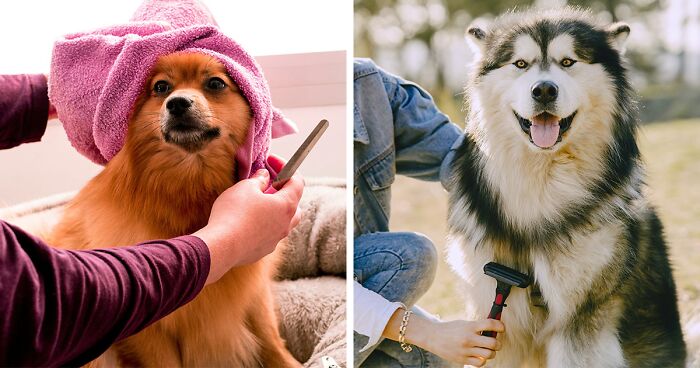
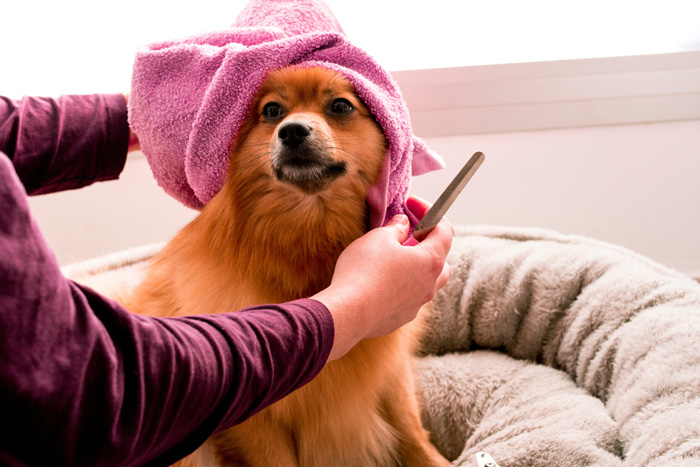 Image credits:
Image credits: 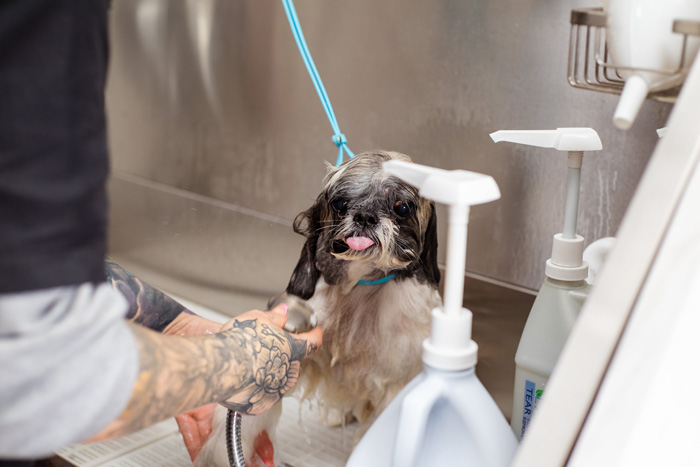 Image credits:
Image credits: 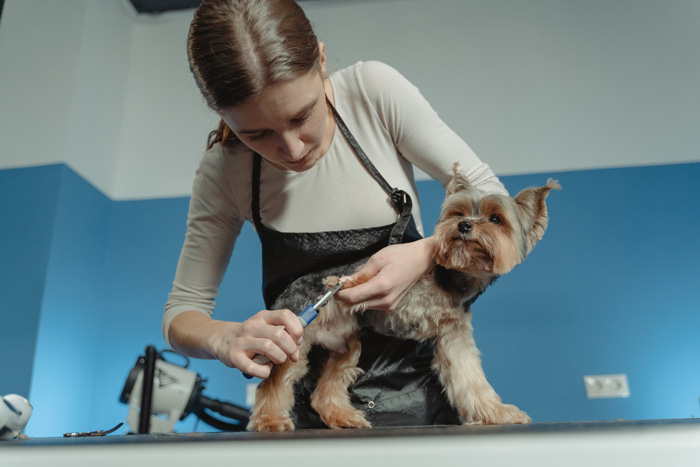 Image credits:
Image credits: 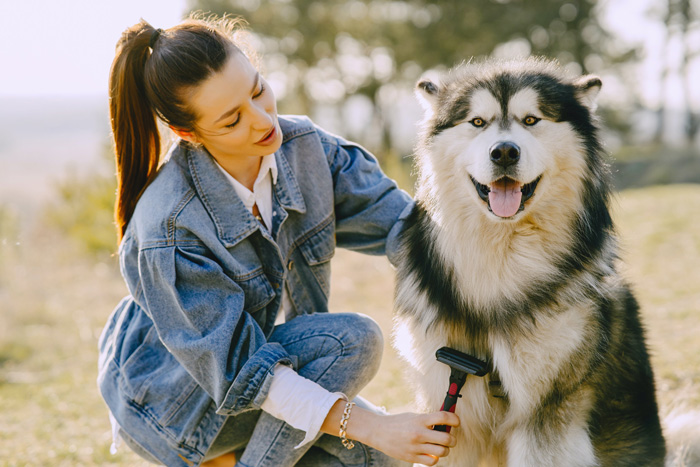 Image credits:
Image credits: 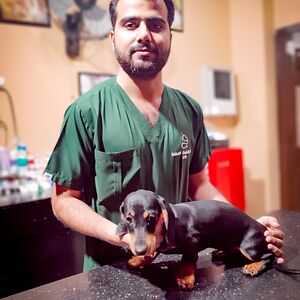










































-2
0